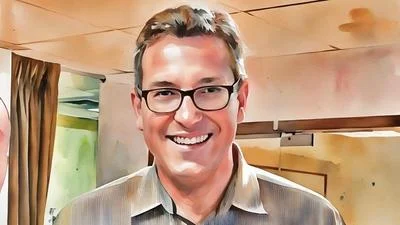The Congressional Record is a unique source of public documentation. It started in 1873, documenting nearly all the major and minor policies being discussed and debated.
“CLOSING THE DIGITAL DIVIDE” mentioning the U.S. Dept. of Commerce was published in the Senate section on pages S1244-S1245 on Feb. 27, 2002.
The publication is reproduced in full below:
CLOSING THE DIGITAL DIVIDE
Mr. BIDEN. Mr. President, I rise today, as we near the end of Black History Month, to focus attention on the widening gap between those Americans who use or have access to telecommunications technologies, like computers and the Internet, and those who do not. Surprisingly, there are those naysayers who suggest that the ``digital divide'' does not exist, that it is a myth or fabrication of consumer and civil rights advocates. Perhaps it is because the term ``digital divide'' has been so over-used and, in some instances, mis-used that it causes some to doubt its existence. Perhaps the term has so thoroughly infiltrated our everyday discourse that it causes skeptics to under-estimate its very real and powerful consequences.
No matter the reason for these naysayers' doubt, the unequivocal answer to their question ``is there really a digital divide'' is a resounding ``YES.'' A series of reports issued by the U.S. Department of Commerce not only confirms that the ``digital divide'' exists; it suggests that, while the number of Americans accessing the Internet has grown rapidly in recent years, the technology gap between poor and minority communities, on one hand, and other Americans, on the other, is actually widening.
Take this seemingly encouraging example: from December 1998 to August 2000, the percentage of African-American households with Internet access more than doubled, from 11.2 percent to 23.5 percent--an encouraging development, by any measure. But during that same time period, the percentage of total households nationally with Internet access soared to 41.5 percent. And the access rates for White Americans and Asian-Americans/Pacific Islanders--46.1 percent and 56.8 percent, respectively--significantly outpaced that national average. As a consequence, the already substantial gap between African-American Internet usage and national usage grew 3 percentage points. The gap was even greater when comparing African-American usage with that of White Americans or Asian-Americans and Pacific Islanders. Similarly, during that same 20-month period, the gap between Hispanic households with Internet access and the national average grew 4 percentage points.
The effect: What was once a gap is now swelling into a chasm. Just this morning, the Wall Street Journal reported that, in 1997, ten percent of Americans earning less than $25,000 a year used the Internet, compared with 45 percent of those earning more than $75,000. By 2001, despite increased usage by both groups, the ``gap'' had grown to 50 percentage points.
Yes, the ``digital divide'' exists, and that fact should concern us greatly. In today's information age, unequal access to the national information infrastructure affects nearly every part of our lives. Access to these networks increasingly dictates the ease with which we can pursue education, conduct our financial affairs, apply for a job, or participate in the political process. Lack of access will only reinforce and magnify already existing inequalities in these important areas of life.
Against that backdrop, I am shocked by the Bush administration's apparent efforts to dismantle many programs designed to eliminate the inequality of access to technology. These programs, including the popular E-Rate Program, have a demonstrated record of success connecting roughly 1 million public school classrooms and 13,000 community libraries to modern telecommunications networks. Moreover, the vast majority of the funding is dedicated to low-income communities, and significant dollars flow to schools under the Bureau of Indian Affairs. By all accounts, these initiatives are working, yet the Administration is maneuvering to eliminate them one by one.
Don't be fooled: This is a not a debate about electronic gadgets or computer megabytes. It is a debate about who gets to speak and who gets to listen. At its heart, it implicates the very nature of our democracy.
It is a debate about who among us, as the information revolution takes off, will be left behind. Electronic commerce has become a critical factor in determining future economic development and prosperity. Communities and individuals without access to the Internet will be excluded from that growth.
The sadness, however, is that, by leaving some behind, we impoverish not only those individuals, we also impoverish ourselves. None of us will enjoy sustained economic growth unless we expand the information revolution to all parts of our society.
With that in mind, we cannot afford to make technology decisions based on dated and ill-conceived perceptions about the interest or ability of minorities and poor people to purchase certain ``high-end'' technology. Nor can we simply bypass low-income and minority communities, where the telecommunications and electronic network infrastructure may be older and, therefore, less able to provide more sophisticated services. To the extent that technology, including the Internet and telecommunications services, is deployed in a way that avoids poor and minority communities, we must do all that we can to deter this form of redlining.
Toward this end, the administration should keep its promise to invest
$400 million to create and maintain more than 2,000 community technology centers in low-income neighborhoods by 2002. The role that community technology centers plays in helping to bridge the digital divide cannot be overstated. Community technology centers are instrumental in closing the information technology divide, and, by tapping demand for these services, supporters of community technology initiatives can open up new markets for companies that serve the Internet economy.
The development of information technology holds great potential to strengthen and invigorate American society. That potential cannot be fully realized, however, unless we pay attention to the hundreds of thousands of individuals, many of whom reside in largely minority and/
or low-income communities, who have no, or limited, access to our burgeoning national information infrastructure. We can, and must, inform decisionmakers about the true value of minority markets receptive to advanced services. We must provide private industry with incentives to deploy in these markets. And, perhaps most important, we must continue to make public investments in underserved communities. Our failure will only dampen private sector and philanthropic efforts, and, more tragically, handicap a generation of Americans for years to come.
____________________








